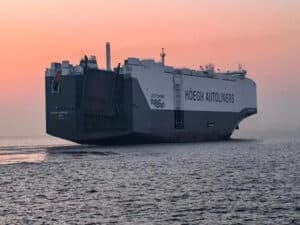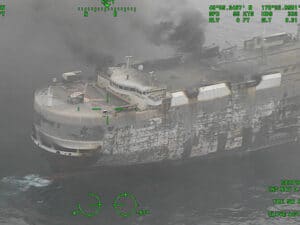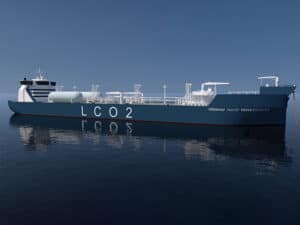
Op-Ed: Building green towing capacity
Written by Heather Ervin
Gareth Prowse, Head of Decarbonisation, Svitzer
By Gareth Prowse, head of decarbonisation, Svitzer
The maritime industry is progressing in its journey toward decarbonization, driven by tightening environmental regulations and rising expectations for sustainable practices. This shift, extending to the port and towage sectors, presents both challenges and opportunities, and Gareth Prowse, head of decarbonization at Svitzer—a global leader in towage with nearly 190 years of expertise—unpacks the innovative solutions the company is deploying to deliver safer and more sustainable marine services for clients while maintaining reliability and efficiency.
Reducing port emissions
Ports are central to supply chains, but delays and inefficiencies can cause bottlenecks with cascading effects on the rest of the supply chain. Towage aids safe and smooth port operations, and in busy ports, there is no room for downtime in towage services. However, today these demands need to be met without compromise when it comes to sustainability, reducing emissions and improving energy efficiency in towage.
The challenge lies in balancing operational reliability with the adoption of cleaner technologies and practices. This includes incorporating hybrid or electric tugboats, optimizing fuel consumption through use of data, and adhering to stricter environmental standards, ensuring that port operations contribute to a greener future without losing sight of the need to remain efficient.
Svitzer operates a global fleet of over 450 vessels across 37 countries and more than 180 ports. At the heart of Svitzer’s decarbonization strategy is fleet renewal and use of modern equipment, focused on reducing emissions and boosting energy efficiency to position the company at the forefront of decarbonization in this essential sector. A central initiative is the development of the TRAnsverse tug, created in collaboration with naval architect Robert Allan Ltd. This advanced vessel, featuring an omnidirectional hull and propulsion system, consumes less fuel while performing versatile towage tasks.
The TRAnsverse tug is not least suited for complex port environments, where precision and efficiency are crucial. It has already been deployed in Europe, with additional vessels under construction for key markets, including Australia. Future iterations of the tug design will include hybrid and perhaps even fully electric models to accommodate varying port infrastructure and energy needs.
Biofuels for immediate impact
While next-generation vessel designs can be transformative for lowering energy use and reducing carbon emissions, the pace at which these vessels can be introduced into the fleet means solutions for the existing fleet need to continue being a priority. Svitzer’s use of second-generation biofuels like hydrogenated vegetable oil (HVO) and Fatty Acid Methyl Ester (FAME) has yielded significant emissions reductions. This includes the extensive use of HVO in the U.K. fleet and most recently a focus on working with high FAME blends, which has led to the significant milestone of converting 10 vessels in Amsterdam to 80% FAME blend. Svitzer is gradually deploying these fuels across the fleet, while ensuring cost effective CO2 reductions that add value to the services it provides to customers and at the same time contributing to its own CO2 reductions.
For vessel operators and cargo owners seeking immediate solutions to reduce their supply chain emissions, Svitzer’s EcoTow program is a unique option. Through EcoTow, customers operating in ports where Svitzer vessels use very low-carbon fuels can access direct decarbonized towage services with certified emissions reductions. Customers operating in ports where directly decarbonized towage services are not available from Svitzer can also use EcoTow as a carbon insetting option. These customers can purchase verified carbon reductions generated by Svitzer’s HVO- or FAME-powered tugs, matching them to emissions from their towage operations elsewhere to reduce their Scope 3 emissions.
World’s first battery-methanol hybrid tug
The construction of the world’s first battery-methanol hybrid tug, announced in September 2024, and scheduled for delivery early in 2026, is another pivotal step in Svitzer’s decarbonization strategy. This vessel will operate in the Port of Gothenburg, a site with advanced low-carbon infrastructure, and is expected to take on 25% of the services provided by Svitzer in the port.
Powered by a 6MWh battery system and supported by dual-fuel methanol engines, the tug is designed to perform over 90% of its operations on electric power. Based on the TRAnsverse design, the vessel is expected to dramatically cut emissions while maintaining the high levels of performance required for towage. The introduction of zero-emission tugs represents a significant advancement for cargo owners operating in ports with strong environmental regulations.
Operational and digital solutions
Svitzer’s commitment to decarbonization extends to include operational efficiencies and digital innovations. Its ‘Aim for 8’ initiative is now fully global, encouraging crews to maintain an 8-knot speed during mobilization to optimize fuel consumption and reduce emissions. The Aim for 8 initiative uses Svitzer’s own Port Monitor platform, enabling crews to see and optimize how efficiently a vessel is being operated. The Aim 8 program has clearly demonstrated how simple behavioral changes can lead to significant environmental gains.
The company is also leveraging digital technology to optimise its operations. Advanced simulators train crews to rehearse fuel-efficient practices in controlled settings, while fleet management tools enable smarter deployment of vessels, ensuring that the most efficient tugs are assigned to high-demand terminals.
Collaboration: The key to progress
Svitzer recognizes that collaboration is essential for driving meaningful progress in maritime decarbonization. By working closely with ports, shipping companies and other stakeholders, Svitzer not only advances its own sustainability but also provides operators with practical tools to reduce emissions in their supply chains.
As the maritime sector grapples with the challenges of creating more sustainable supply chains, Svitzer’s comprehensive approach—spanning fleet innovation, alternative fuels, energy-efficient practices, and digital solutions—offers a proven model for achieving meaningful progress. In partnership with expert service providers, operators and cargo owners can take a vital step toward achieving sustainability goals and ensuring a more sustainable future for global trade.




